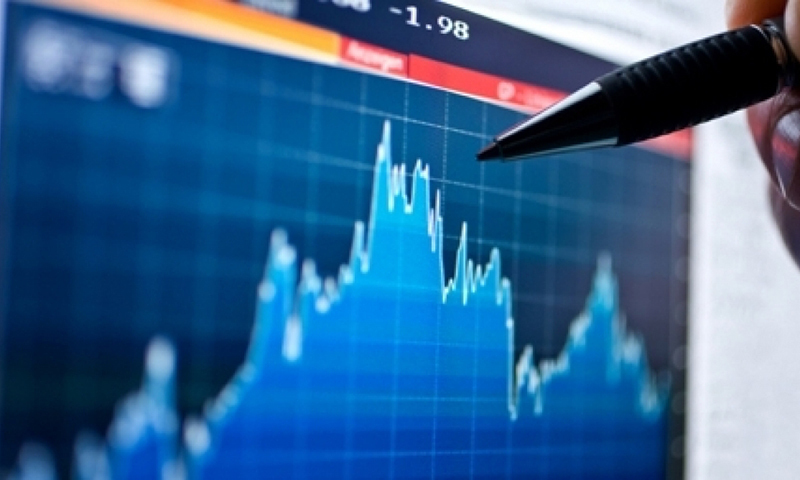LAHORE: The country’s leading economists have expressed mixed views on the provisional estimate of 3.94 per cent GDP growth rate projected by the National Accounts Committee (NAC) and said it negates the government’s own estimate of 2.9pc GDP growth approved by the federal cabinet last month.
Last month, the federal cabinet approved the medium-term budget strategy paper and shared it with the International Monetary Fund (IMF). In this paper, the government estimated 2.9pc GDP growth for ongoing fiscal year. “But now, all of sudden within a couple of weeks, how it has jumped to 3.94pc,” wonders former finance minister Dr Hafeez Pasha. “The State Bank of Pakistan’s estimate ranged between 2.8pc and 3pc while the estimates of the IMF and the World Bank stood at about 2pc and 1.5pc, respectively,” he said.
Prime Minister Imran Khan in a tweet on Friday termed 3.94pc GDP growth as estimated by the NAC a success of his government’s economic policies while it had managed to control Covid-19 pandemic. “Our V-shaped recovery is balanced between 3 major sectors: agriculture, industry & services,” read PM Khan’s tweet.
Similarly Minister for Planning and Development Asad Umar termed 3.94pc GDP growth a great success of the government and said: “The 3.94pc growth in a period in which Covid-19 placed a huge challenge to the economy is extremely gratifying and proof of success of Imran Khan’s economic policies.”
Dr Pasha said the government had admitted 22.996pc decline in growth of energy sector (electricity, gas etc). But on the other hand, it had estimated massive growth in industrial sector which could not move ahead without energy, he said.
According to Mr Pasha, the agriculture sector, which was immensely disturbed last year due to meagre cotton production, suddenly picked growth during the current fiscal year at a time when transport and communication sectors registered a declining trend. Besides, the wholesale and retail sectors continue to be in trouble.
Talking to Dawn, Dr Sajid Amin Javaid, research fellow and the chief of the Sustainable Development Policy Institute’s Policy Solution Lab, said even if low base effect was taken into account, the GDP growth estimate of 3.94pc had taken experts by surprise.
“It is almost double than highest forecast of 2pc of the IMF, revised from initial forecast of 1.5pc. While there were some discussions on slightly higher growth rate than the IMF forecast, mainly because of good agriculture production with some bumper crops, the expectations were anywhere between 2pc and 2.5pc at the maximum. I think not much has changed in manufacturing and other sectors since the IMF revised its estimates. On the other hand, we have had third wave the pandemic forcing limited economic activity once again,” he explained.
While discussing how realistic is this number, he said an objective assessment depended on access to information as to how this number was reached and what data was used. “And how is this data different from the data given to or collected by the IMF? What has so markedly changed since April 2021 that the IMF has missed to foresee? How the assumptions and projections for last quarter data vary between IMF and National Account Committee estimates? What are the proxy variables used for missing data? Definitely there are some surprises in sectoral estimates as well.”
Overall, he said, the figure seemed to be overestimated when compared with current trends in the economy and available information. “I think the number will be revised substantially downward later on. To me, the revised growth rate is most likely to be somewhere between 2pc and 2.5pc,” he claimed.
“The GDP growth was revised downward to 1.9pc from the earlier 3.3pc in fiscal year 2019. Every government has the tendency to come up with highest possible growth rate initially to show its performance. People generally ignore the revised estimate. I think the same practice is in play here,” he said.
On the other hand, Dr Ijaz Nabi is of the view that 3.94pc growth rate is possible. “Generally 2pc to 3pc growth is considered to be a default rate. But if it has reached almost 4pc, we cannot declare it unrealistic. Still it is not a satisfactory situation since we need 6pc to 8pc growth rate,” he argued.
He said 3.94pc growth rate had emerged due to good weather conditions that led to huge wheat and other crops production this year.
Naved Ahmad also termed 3.94pc GDP growth estimate unrealistic, saying it should have been 3.5pc. “It is my feeling that 3.5pc GDP growth would have been a more realistic figure.”
He said since no data on services sector was available, governments generally relied on the data of crops production and assume the growth of other sectors on its basis. “Unfortunately, our basis of estimates is weak,” he added.
Economist Pervaiz Tahir also termed 3.94pc growth rate unrealistic and said independent operation of the Pakistan Bureau of Statistics (PBS) was the only way forward to get a transparent projection of the growth.
Previously, the PBS worked under the finance ministry. Later it came under administrative control of the planning ministry. However, under the constitution, it should be under the Council of Common Interests, he explained.
He said if growth in various sectors, agriculture, industrial etc, was admitted, there should have been about 3pc growth rate. “But it jumped to around 4pc and I think one per cent has been added forcibly,” he said.
Published in Dawn, May 23rd, 2021














































